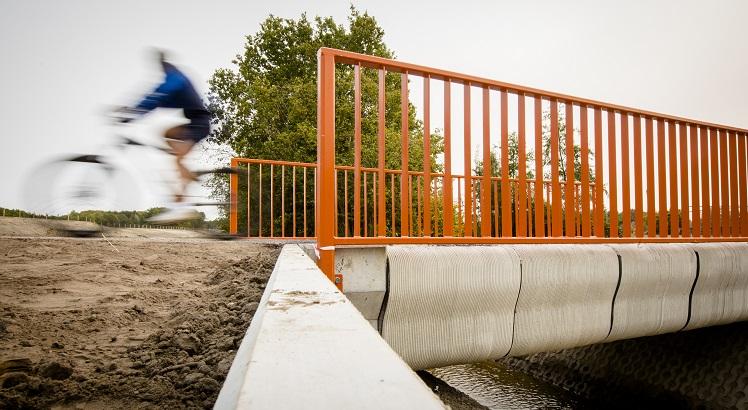
There was applause as local authorities, wearing helmets and construction uniforms, crossed the bridge on their bikes in the town of Gemert in the south-east of Holland.
"The bridge is not too big, but it was made with a printer, which makes it unique," Theo Salet of the University of Technology in Eindhoven told NOS.
The print job of the bridge, which has about 800 layers and is made of prestressed and reinforced concrete, took about three months, according to the university.
"One of the advantages of printing a bridge is that it takes much less concrete than the conventional technique in which a mold is filled," the institution said on its website, adding that "a printer deposits the concrete only where it is needed."
SEARCH
The eight-meter bridge connects two roads over a water-filled trench. With the collaboration of construction company BAM Infra, it has been tested to ensure that it is safe and capable of withstanding loads up to two tonnes.
The Netherlands, as well as the United States and China, are leading the way in using 3D printing technology, using computers and robotics to build objects and structures from scratch without using traditional manpower.
The Dutch start-up MX3D has completed one third of the impression of a stainless steel bridge, and plans to complete the construction in March to install it on an Amsterdam canal in June 2018.
© Agence France-Presse

No comments:
Post a Comment